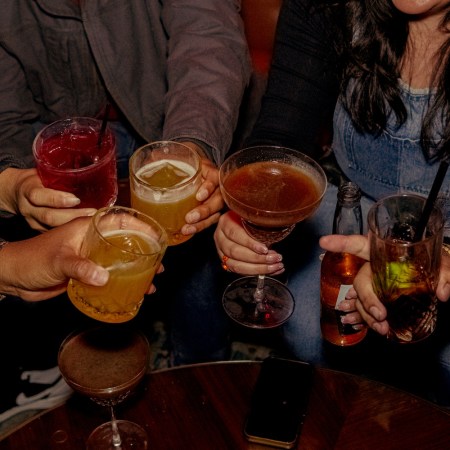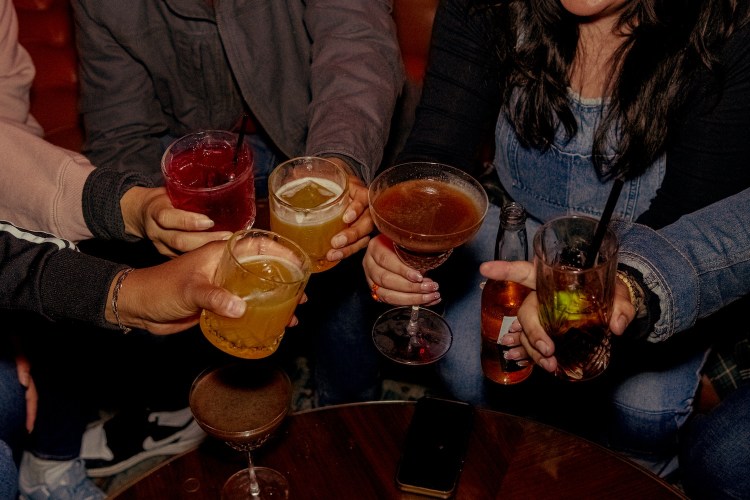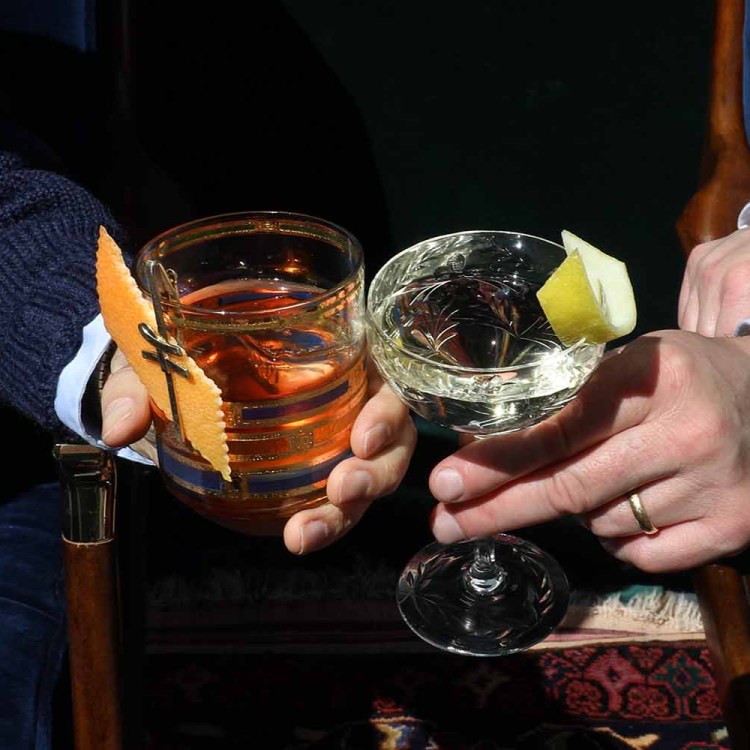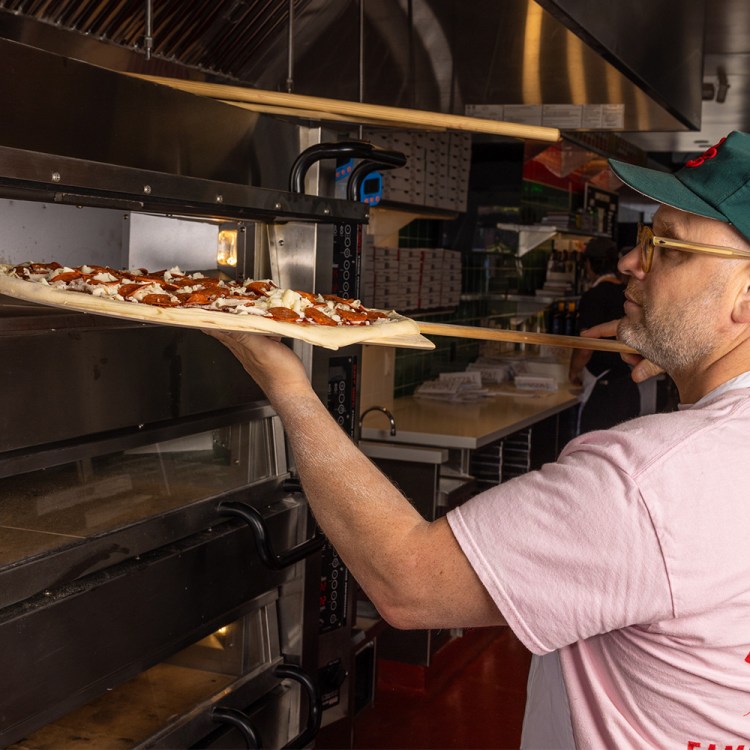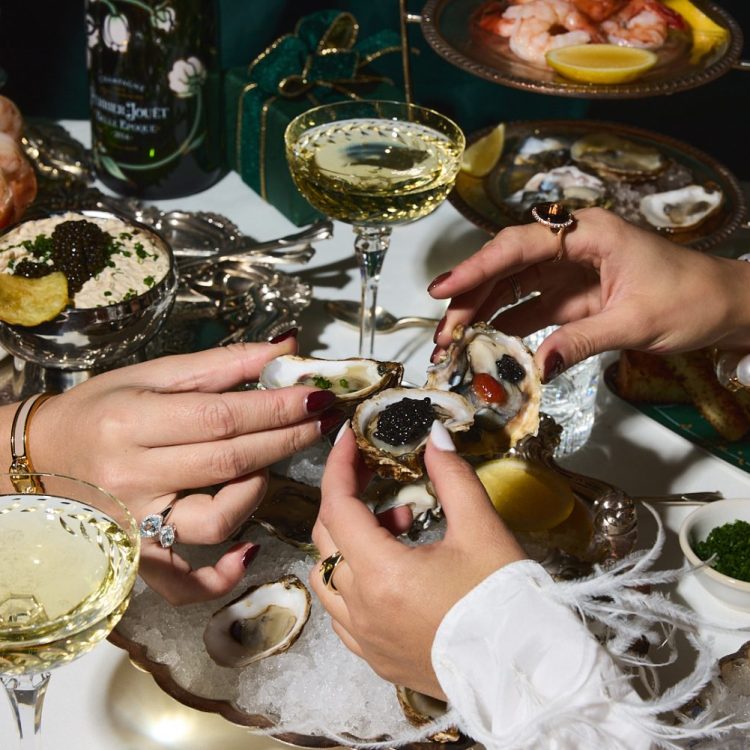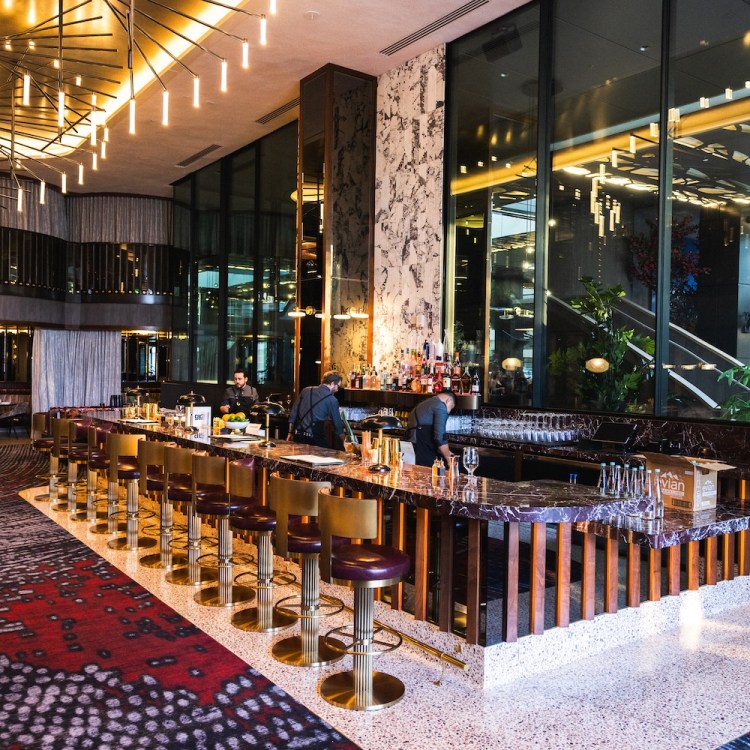If you’ve ever pressed wax to board, you know who Laird Hamilton is.
Big-wave surfing legend. Invented the tow-in. Rode Big Wednesday under a mother-lovin’ pier last year. And a man seldom seen wearing a shirt.
Curious, considering he just launched what’s sure to be Southern California’s next favorite thing in menswear: Laird Apparel.
His clothing evokes a heritage California aesthetic — think clean lines, hardy materials and bold pantones — while wearing technical enough to withstand 20-foot-waves.
They’re making board shorts, tees, shirts and jackets, almost all with four-way stretch and a relaxed, brunch-friendly fit.
They’re also offering a limited run of limestone wetsuits exclusively at Ron Robinson.
We sat down with Hamilton to discuss his clothes, working in a sweatshop and what he sees as the next trend in men’s health (clue: it’s not his Superfood, which we’re currently testing).
InsideHook: I rarely see you with a shirt on. What made you want to get into apparel?
Laird Hamilton: (Laughs) I do wear shirts.
IH: I see you’re wearing one from the collection now.
LH: You know, probably the biggest inspiration is that I can’t find stuff for myself. So most of the things that I’m involved with are innovative; they don’t exist. The board that I wanted didn’t exist, so I go off of that as the foundation of an idea. I see something, but it’s not here. So I make something, and I find if I make something that I like, there’s a big group of people that like it, too — because we’re all not that different. One of my first jobs was in the garment industry. I worked in downtown L.A. at a sweatshop, and I was involved in every aspect of an apparel company, from cut and sew to sales … you name it.
IH: Whoa. Can you tell us a little more about that company?
LH: It was a private company, an old Korean man named Mr. Chung, but he used to build all of the technical Guess clothing and then Oxygen. So I learned about the garment industry when I was 19. I had an understanding of it, and one thing I had in the back of my head was that the one intangible that you can’t create is brand equity. How do you make a brand have value, right? Well, that takes years of advertising and all this stuff and I always thought that if I went out and built my brand that I would be an obvious person to go to for apparel. I’ve been a sponsored athlete promoting other people’s brands for more than 30 years. I want to develop my own brand that I can influence, that I can make — that I want and that I really don’t see out there.
IH: So tell me about the shirt you’re wearing now. Your partner was telling me that it’s a rash guard yet looks like a polo.
LH: Yeah, so we’re doing stuff like that, that are more multifunctional. We always say that rash guards make you look like a sausage. You wouldn’t walk into a restaurant wearing it, because it would look so weird.
IH: And it stays wet.
LH: Yeah, it stays wet. You’d wear a cotton shirt in Cabo and you’d be sweating. But I was wearing this thing, a black shirt, and it still wasn’t hot. There’s a saying in the garment industry, “Nothing new, just a new application of an old idea.” We’re not reinventing the wheel, but we are looking for new fabrics, trying to use stuff in new ways and maybe take an existing fabric and an existing cut that aren’t being used together and make something new, which I call “hybrids.” If I make stuff that’s authentic for me, that I love and I can test out, I know there’s going to be a group of people that are going to like it. We’re not all that far apart: two legs, two arms, and you know we want function. I told someone earlier: function has an aesthetic. When a bird is flying, it looks beautiful. So if you make stuff that’s truly functional, there will be an aesthetic value to it no matter what. And then you put a nice color and a nice texture to it and that can top it off.
IH: On the website, it says that you got some inspiration from the ‘60s, from that heritage California look. What about that era do you love?
LH: It’s simple. And I grew up during that time. It’s what I looked up to: my dad and Jerry Lopez and the boys. Those guys were my heroes and there was a cleanness to that look that wasn’t skate, because skate didn’t exist. There wasn’t this urban influence. It was a little more race-car driver.
IH: Changing gears … This is probably like asking a fisherman where his favorite hole is, but where do you like to go paddle-boarding when you’re in Malibu?
LH: I spend most of my time in Paradise Cove. This is my offseason, so my mentality and focus is more of a maintenance thing. This time of year for me, when I go paddling, is therapy. I don’t have any expectations. It’s not monumental. It’s more like I come out to be in the water. This time of year I’m training, doing all of these intense regimens that I can be really consistent with, because I can’t be doing them in the wintertime when a giant swell comes. You have to be prepared for that.
IH: You see a lot of health and fitness trends. Which trends do you see right now that have the most legs?
LH: I’ll let you in on a secret: the biggest trend that’s not here yet, but it’s going to steamroll the world, I believe, is breathing.
IH: Breathing?
LH: Breathing. It’s been around.
IH: Since the very beginning.
LH: And also there are disciplines of yoga designed specifically for breathing, but I have a guy here right now staying with me from Amsterdam and we did some things today that are revolutionary. He’s proving scientifically that you can cure osteoporosis, heart disease and arthritis just by breathing. I think that’s going to affect sports, affect health and wellness, affect medicine. I think it’s going to be in every single place because in a way it’s so obvious, so simple — that’s why we missed it. The guy’s name is Wim Hof. He’s known as the Ice Man.
IH: He was in Men’s Journal.
LH: And (Joe) Rogan’s Podcast and Vice did a piece on him. He wants to cure the world.
IH: Yeah, and then maybe we could clean up the air, because that would help.
LH: Absolutely. The more air we breathe, the more we’ll become concerned.
This article was featured in the InsideHook LA newsletter. Sign up now for more from the Southland.





